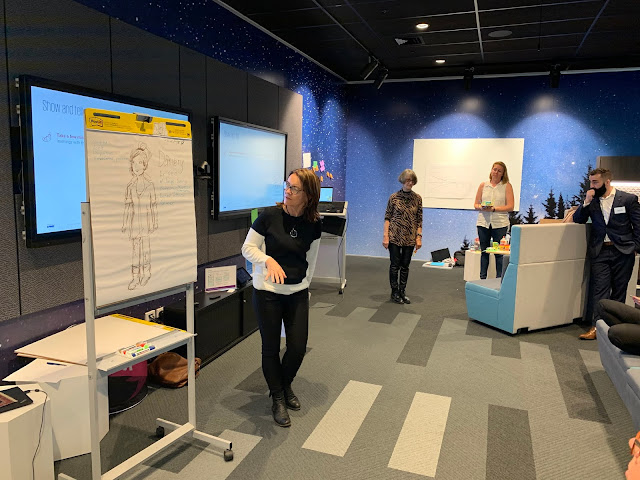Design thinking can be used to problem solve a wide range of human related issues that encourages people to think outside the box to find solutions that encompass the needs of all involved. Five steps are involved, empathise, define, ideate, prototype and test. Empathetic design thinking starts with participants, observing and listening to the problem at hand while putting aside all judgments and preconceived perceptions. Approaching problem solving through an empathetic lens, potentially opens up those involved to consider everyone's perspectives and different viewpoints without judgement. It helps to build a profile of the situation or person/s to really define the problem and identify the issue. The ideate stage is where you go beyond thinking outside the box, no idea is too wacky or wild. It's a time for getting ideas down, then categorising them if possible to establish recurring themes. Developing a prototype and testing that prototype is an iterative process that could go through several cycles of elimination and refinement. Key to this last stage was being able to communicate the issue, ideas and prototype to someone who wasn't associated with the project or it could have been the client. In our group we found this part of the process helped us to identify things we'd overlooked or hadn't given enough thought to.
I was first involved with design thinking at a professional development day at Hobsonville Point some years back and I have on many occasions used this approach with digital design students at high school. I'd like to learn more about how to best apply the technique with students in bit sized lessons over one or two periods to kick start a project. I've often found that design thinking is something that goes over an extended period of weeks or even months but if I could narrow that down to an hour's lesson would be ideal with the changing nature of my facilitation.
Below is an image of me trying to explain to our team's design for the group. I was lucky to have the very talented Anne Sinclair (who drew Danvery) along with vibrant Venessa Davan and Deborah Wallace in my team.
We came up with a fictional character called Danvery who left corporate life disillusioned with the exploitation of the natural world and the industrialisation of farming. Danvery developed a business making bespoke edible coffee cups from seaweed that she hoped to see in every cafe through the country in a bid to encourage sustainable practice.
I was first involved with design thinking at a professional development day at Hobsonville Point some years back and I have on many occasions used this approach with digital design students at high school. I'd like to learn more about how to best apply the technique with students in bit sized lessons over one or two periods to kick start a project. I've often found that design thinking is something that goes over an extended period of weeks or even months but if I could narrow that down to an hour's lesson would be ideal with the changing nature of my facilitation.
Below is an image of me trying to explain to our team's design for the group. I was lucky to have the very talented Anne Sinclair (who drew Danvery) along with vibrant Venessa Davan and Deborah Wallace in my team.
We came up with a fictional character called Danvery who left corporate life disillusioned with the exploitation of the natural world and the industrialisation of farming. Danvery developed a business making bespoke edible coffee cups from seaweed that she hoped to see in every cafe through the country in a bid to encourage sustainable practice.




